#Arapaho
Explore tagged Tumblr posts
Text
I was curious so I checked - Disney+’s Moana (2016) version does NOT have any of the Pacific Islander options for the audio or subtitles. That feels unfair. That means one can only watch it in Te Reo Māori, Hawaiian, or Tahitian if one bought the dvd. I feel like that is kind of predatory and uninclusive. If the stock runs out, what are people who want to watch Moana in those languages supposed to do? And what if they’re already paying for Disney+? That seems unfair. Additionally, Frozen II has a Sámi dub, The Lion King has a Swahili dub and apparently Bambi has an Arapaho dub (random???* Would love to know more. This clip is adorable). None of which are available on Disney+.
I will acknowledge that my family subscribes in the USA, and that this might be different in different areas. But also, Moana got dubbed in Hawaiian (by the original English language actress, Auli’i Cravalho!) and Hawaii is in the USA … so where the hell is it???
*okay looks like it was an Arapaho-led effort meant to help raise money and encourage young learners, due to the short and simple dialogue. Not like when Disney just decided to assign Swahili as the Lion King’s language because both are African ig
#Moana 2#Moana#Moana (2016)#Moana 2016#frozen ii#frozen (2013)#frozen 2013#Bambi#Bambi 1942#Bambi (1942)#aotearoa#Māori#te reo māori#Tahiti#Tahitian#Hawaii#Hawai’i#Hawaiian#Sami#sámi#sapmi#Finland#also tbh I love listening to Disney songs in other languages#I don’t do it very often but#that video of#how far i'll go#with the different lines being different languages#has never left my mind <3#Arapaho#Wyoming
154 notes
·
View notes
Photo
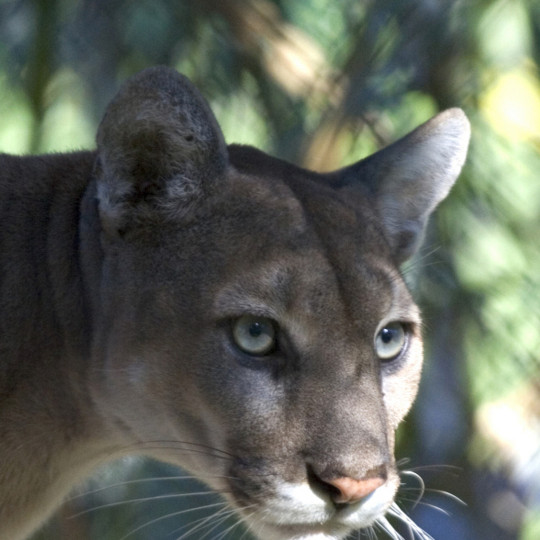
Nih'a'ca Tales
Nih'a'ca tales are Arapaho legends concerning the trickster figure Nih'a'ca, who, according to Arapaho lore, is the first haxu'xan (two-spirit), a third gender, often highly regarded by many Native American nations, including the Arapaho. The Nih'a'ca tales are similar to the Wihio tales of the Cheyenne and the Iktomi tales of the Sioux.
North American Panther
Rodney Cammauf /National Park Service (Public Domain)
Circumstances and situations differ between the Nih'a'ca tales and those concerning trickster figures of other Native peoples of North America, but the central character of the trickster plays the same role – sometimes as sage and mediator, sometimes as schemer and villain – in them all. In the case of Nih'a'ca – always referred to by the male pronoun in English translations of Arapaho tales – he is frequently depicted in legend as someone who tries to better himself, usually at the expense of others or by trying to take shortcuts, and suffers for it.
At the same time, Nih'a'ca can be wise, offering advice, or clever, as in the story Nih'a'ca Pursued by the Rolling Skull, in which he must find a way to escape death. His identity as a haxu'xan is often, though not always, central to the story's plot – as in Nih'a'ca and the Panther-Young-Man where he, identifying as a woman, marries a panther – and, in stories where his gender is highlighted, serves to teach an important cultural, moral, lesson.
The Nih'a'ca tales are still told in Arapaho and Cheyenne communities, as well as others – including LGBTQ organizations – not only for their entertainment value but for the lessons they offer on personal responsibility and the proper respect and treatment to be shown to others. Like the trickster figures of other nations, Nih'a'ca is often depicted as, or associated with, the spider – spinning webs to catch others which often wind up entangling himself.
The Two-Spirit & Nih'a'ca
Two-Spirit is a modern designation, coined as recently as 1990, for the third gender recognized by many Native American nations for centuries before their contact with European immigrants. Because the term is so new, the two-spirit is often, incorrectly, assumed to be a recent 'discovery' made by anthropologists when, actually, European accounts going back to 1775 reference a third gender among North American Native peoples and the oral histories, myths, and legends – like the Nih'a'ca tales – also attest to the long-standing recognition of two-spirits in a given community.
As the term implies, a two-spirit is someone who recognizes both a male and female spirit dwelling within and often, though not always, dresses in the clothes and performs the duties of their opposite biological sex. Because they are understood as both male and female, two-spirits are recognized as possessing especially keen insight and often serve as mediators – in the present as they did in the past – in resolving personal or communal disputes. They were, and are (or can be), also regarded as holy people – "medicine men" and "medicine women" – serving as mediators between the people and the spirit world. Scholar Larry J. Zimmerman comments:
The relationship between a holy person and the spirit world is almost that of a personal religion. The first meeting with the spirits becomes the personal myth, and the power of this myth is important for establishing the holy person's credentials with the tribe, on behalf of which his or her skills are used to locate game, find lost objects, and, above all, treat the sick. The holy person can enter a trance at will and journey to the sacred world.
(132-133)
While Nih'a'ca is sometimes depicted as a holy person, he is more often quite the opposite, possessing characteristics such as selfishness, cruelty, and a blatant disregard for cultural norms. Through the Nih'a'ca tales, which frequently conclude with the central character suffering for his misdeeds, higher values including selflessness, kindness, and respect for tradition and the feelings of others are highlighted.
Nih'a'ca, then, usually serves as an exemplar of bad behavior and is given the identity of a two-spirit – in fact, the first two-spirit in the world – because the recognition of the sacred aspect of the two-spirit further emphasizes just how misguided Nih'a'ca's choices and actions can be. The tales themselves are a kind of 'trickster' turning expectations upside down and, in so doing, offer an audience the opportunity for reflection on their own behavior and the possibility of transformation.
Continue reading...
63 notes
·
View notes
Text

Arapaho Boy - Baker and Johnston - 1878/1885
28 notes
·
View notes
Text

[Mother and Child - Arapaho]
1910
Edward S. Curtis (American, 1868 - 1952)
Getty Museum
11 notes
·
View notes
Photo

Arapahos
Les Arapahos sont une nation autochtone originaire de la vallée de la rivière Rouge, dans les actuels Manitoba (Canada) et Minnesota (États-Unis). Ils migrèrent vers le sud au début du XVIIIe siècle et s'établirent dans les régions actuelles du Colorado, du Montana, du Nebraska, du Wyoming et dans d'autres régions du sud. Ils sont associés à la culture des Indiens des plaines et ont longtemps été les alliés des Cheyennes.
Lire la suite...
3 notes
·
View notes
Text

Bird Chief, profile
C. 1872 ...
Bird Chief,
Arapaho ...
22 notes
·
View notes
Text

Moonset over North Arapaho Peak
#post card#post cards#postcard#postcards#moon#colorado#boulder#arapaho#arapaho peak#landscape#photography#travel
3 notes
·
View notes
Text
youtube
Ani Kuni (version of Ani Couni Chaouani) by Polo & Pan - Video by Noemi Ferst, Benjamin Moreau and MAY (Vincent Gibaud, Margaux Rosiau, François Sibiude)
#music#french music#polo & pan#arapaho#bruno bertoli#sylvain rabbath#alexandre grynszpan#paul armand delille#victoria lafaurie#chloé siegmann#noémi ferst#ayca yaren sahin#mathias mimoun#daniel kendrick#music video#benjamin moreau#vincent gibaud#margaux rosiau#françois sibiude#animation#noemi ferst#Youtube
19 notes
·
View notes
Text

#CharlesPratt#Cheyenne, #Arapaho, #Sioux
Com stalks made with bronze, copper, and turquoise. The artist, Charles Pratt, was an multi-award winning artist, with over 400
2 notes
·
View notes
Photo
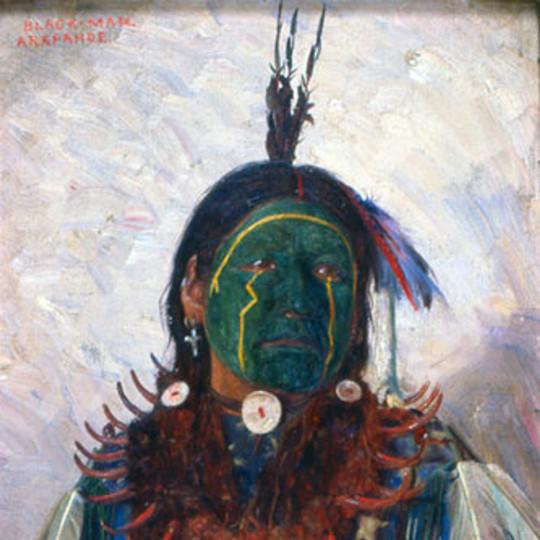
Arapaho
The Arapaho are a North American Native nation originally from the Red River Valley in modern-day Manitoba, Canada, and Minnesota, USA. They migrated south in the early 18th century and established themselves in modern-day Colorado, Montana, Nebraska, Wyoming, and points south. They are associated with the Plains Indians culture and have long been allies of the Cheyenne.
The Arapaho adopted an agrarian lifestyle early, which was then modified when they were introduced to the horse by French traders. Able to travel further on hunts now, they gradually became a nomadic people and, pressured by the Ojibwe expansion in the Great Lakes region, moved south. Scholar Adele Nozedar writes:
When the settlers first came upon them, the Arapaho were already expert horsemen and buffalo hunters. Their territory was originally what has become northern Minnesota, but the Arapaho relocated to the eastern Plains areas of Colorado and Wyoming at about the same time as the Cheyenne; because of this, the two people became associated and are also federally recognized as the Cheyenne and Arapaho Tribes.
(25)
The Arapaho speak the Arapaho language (part of the Algonquian language group) and continue to practice their traditional, animistic, religion today as they did in the past, although many now blend the ancient spiritual beliefs with Christian rites and rituals. They were among the Plains Indians who participated in the Sun Dance (which they referred to as the Offerings Lodge) in the 19th century and still observe the ritual today at the Northern Arapaho Reservation of Wind River in Wyoming.
Like other nations of the Great Plains, and elsewhere, the Arapaho clashed with the Euro-American settlers migrating west in the mid-19th century. Allied with the Cheyenne and Sioux, Arapaho warriors took part in the Colorado War (1864-1865), Red Cloud's War (1866-1868), and the Great Sioux War (1876-1877), among other conflicts. The Southern Arapaho were camped with the Southern Cheyenne under Chief Black Kettle (l. c. 1803-1868) when they were attacked by US cavalry in what is now known as the Sand Creek Massacre (29 November 1864), which only strengthened their resolve to defend their ancestral lands against invasion by White settlers from the United States.
Even so, by 1868, both the Northern and Southern Arapaho understood the futility of continuing the fight against overwhelming forces and agreed to move onto reservations (which is one of the reasons so few Arapaho were present at the Battle of the Little Bighorn in 1876). The Southern Arapaho were relocated to Indian Territory (modern-day Oklahoma) while the Northern Arapaho were moved to the reservation of the Shoshone, their traditional enemies, in Wyoming.
Like the Pawnee, the Arapaho were allowed to continue to observe the Ghost Dance, initiated by the Paiute Nation in 1889, after the US government prohibited other nations, notably the Sioux, from doing the same. The songs and rituals that accompany the Ghost Dance enabled the Arapaho to retain much of their culture, and both Northern and Southern Arapaho continue these traditions today.
Name & Nation
The name Arapaho was given to the people by European colonists who mispronounced the name given them by the Crow nation – Alappaho ("Many Tattoos"), which the people then began to apply to themselves. They originally called themselves Hinono'eino ("the people" or "our people"). The Cheyenne referred to them as Hitanwo'iv ("People of the Sky"), but the reason for this is unclear.
In the 18th century, the Arapaho nation consisted of five bands, each with their own dialect of the Algonquin Arapaho language:
Beesowuunenno (Big Lodge People)
Hanahawuuena (Rock People)
Hinanae'inan (Arapaho Proper)
Nawathi'neha (Southern People)
Haa'ninin (White Clay People - better known as Atsina and Gros Ventre)
The Gros Ventre split from the other bands in the early 18th century and were later regarded as inferior by the Arapaho. The Arapaho nation was then defined by the four remaining tribal bands, who separated into the Northern Arapaho and Southern Arapaho with the northern band holding the position of the "mother tribe" responsible for the safekeeping of sacred objects such as the ceremonial flat pipe.
Southern Arapaho Woman's Leggings and Moccasins
Uyvsdi (Public Domain)
Continue reading...
42 notes
·
View notes
Text

Arapaho, Sun Dance - Snell - 1880s
30 notes
·
View notes
Photo

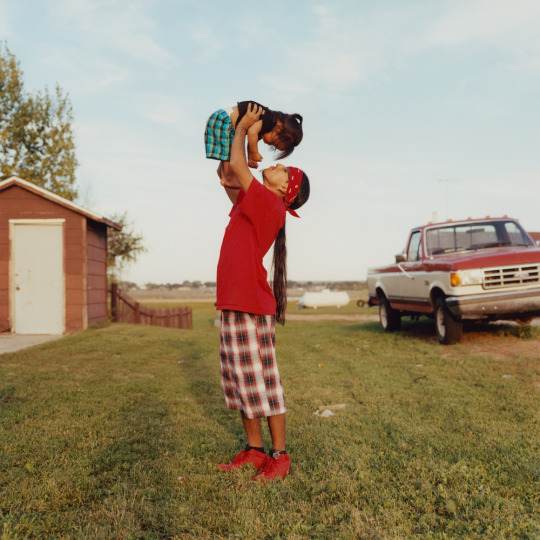
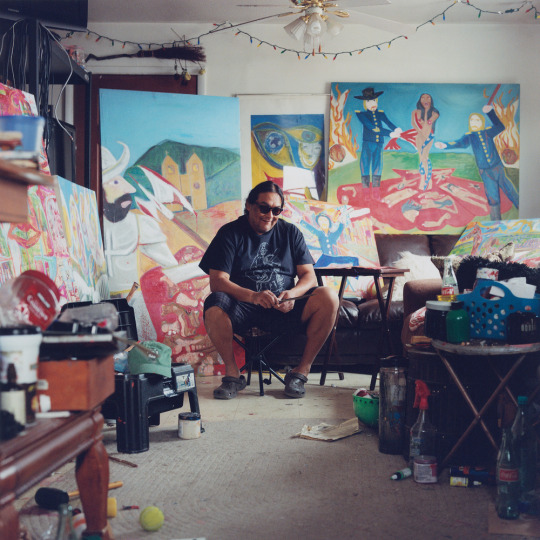
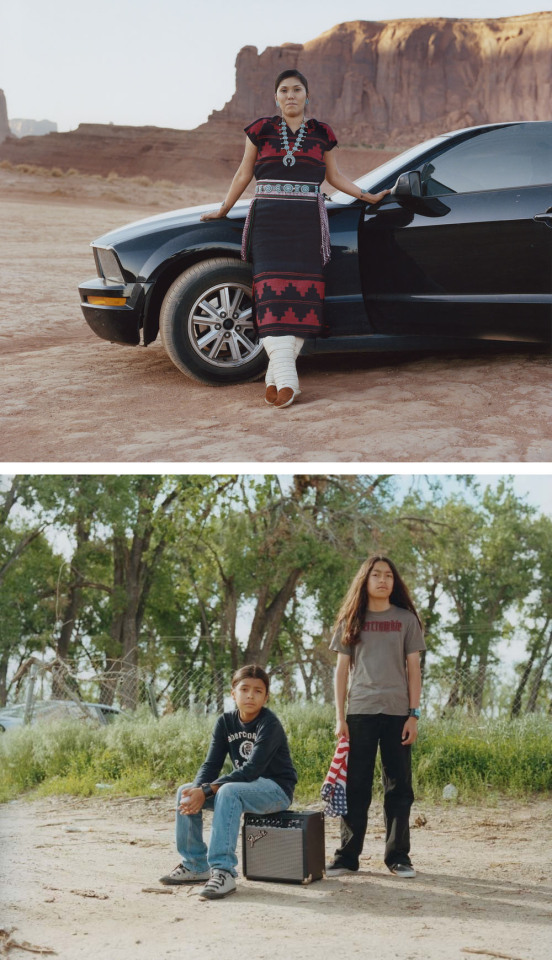






#indigenous#indigenous photography#indigenous communities#indigenous issues#indigenous activism#indigenous rights#indigenous art#indigenous artist#queer#queer indigenous#two spirit#indigiqueer#indigenous heritage month#native american heritage month#shoshone#pueblo#diné#navajo#arapaho#apache#oglala lakota#oglala#lakota
53K notes
·
View notes
Photo

La Femme et le Monstre
La femme et le monstre est une légende de la nation Arapaho qui raconte l'histoire d'une femme qui, alors qu'elle se noyait dans une rivière, est transportée dans le royaume d'un esprit élémentaire de l'eau qui lui enseigne la bonne façon pour son peuple de l'honorer et, ce faisant, d'être en sécurité dans ses eaux.
Lire la suite...
1 note
·
View note
Text

The Arapaho are one of the important Plaines peoples who acquired horses and hunted bufalo--the popular image of Native Americans. The photo depicts four Arapaho boys in 1882. They are wearing loincloths. For one of them this is the only garment while the others wear also leather chaps and moccasins ...
Arapaho boys, 1882
8 notes
·
View notes
Text

Hey #Lovers❤️🔥! Experience the vegan vibes in Colorado 🌄 on 🌺RAW1111.COM🥑. Explore this plant-based paradise in the Rockies! 🌱 #GVWU Go Vegan With Us 🌱💚
#Colorado#colorado rockies#denver#boulders#native american#Ute#Apache#Arapaho#european#history#education#vegan#fruits#nature#vegan lifestyle#raw vegan#gvwu#vegan food#realnessalwayswins#vegetables#plantbased
1 note
·
View note
Text

Ground Bear-Northern Arapaho, Ft Washakie (1883)
1 note
·
View note